Deciding between the Rolex Datejust 36 and 41 has been a classic dilemma. With most things in the luxury world, the decision ultimately hinges on the size of your wrist and your personal style preference. Wrist sizes under 6.5″ and people looking for something simple and timeless should go for the 36mm. Wrist sizes over 7″ and people looking for something a bit more modern and bold should go for the 41mm. This article delves into the history, key differences, and on-the-wrist experience of these two iconic Rolex Datejust watches to help you decide which is the perfect fit for your style and wrist.
Key Takeaways:
- A Tale of Two Sizes: The Datejust 36 is the classic sizing that defined the collection for decades, while the Datejust 41 is a bit more modern
- The Nitty-Gritty: Small differences in case dimensions, bezels, and bracelets create noticeably different aesthetics and wearing experiences.
- The On-the-Wrist Experience: Each size has its own character on the wrist, from the understated elegance of the 36mm to the confident presence of the 41mm.
- Making Your Choice: Your wrist size, personal style, and how you want the watch to feel will guide you toward the perfect option.
The Rolex Datejust stands as one of the most recognizable watches in Rolex history, and both the 36mm and 41mm versions continue this legacy today. Understanding what sets them apart will help you find the model that matches your needs.
A Tale of Two Sizes: The History and Evolution of the Rolex Datejust
The Datejust has had a near-eighty-year history, and its transformation from one pioneering design to a collection with many different size options speaks to Rolex’s desire to honor its past while also moving with the times.
The Classic Size: The Datejust 36
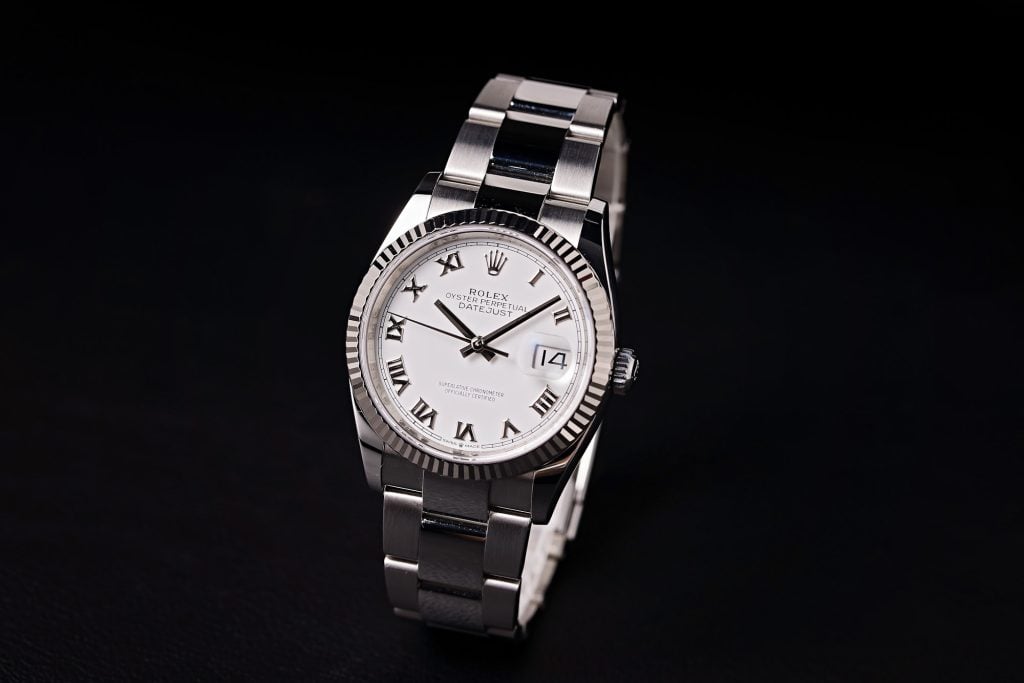
Rolex launched the Datejust in 1945 as a “milestone in watchmaking”. The Datejust was the first self-winding waterproof chronometer wristwatch with the date appearing in a window on the dial. Initial production pieces were approximately 35mm but Rolex ultimately settled on the 36mm case size which became the gold standard for men’s dress watches for most of the 20th century, making the Rolex Datejust 36 the perfect compromise between watch presence and dressiness.
A Sign of the Times: The Introduction of the Datejust II
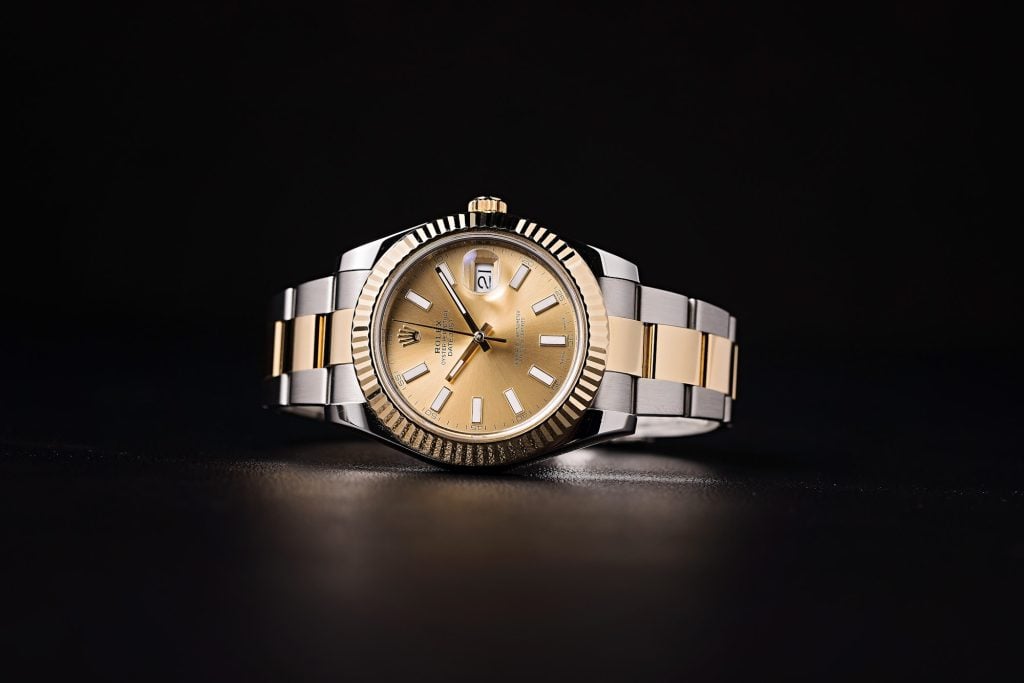
By the early 2000s, watch trends had shifted dramatically toward larger case sizes. Responding to this market demand, the brand launched the Rolex Datejust II watch in 2009 with a 41mm case. This was a significant departure from tradition, offering customers who wanted more wrist coverage a legitimate option within the Datejust family.
Refinement and Relaunch: The Datejust 41
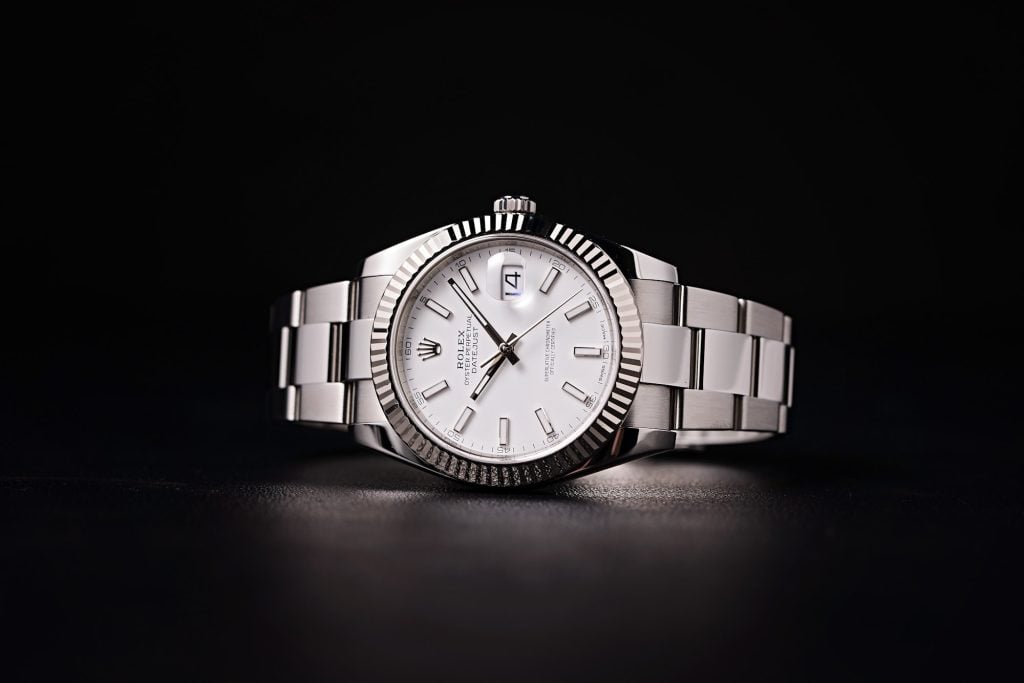
In 2016, the brand replaced the Datejust II with the Rolex Datejust 41, bringing important refinements to the larger model. A slimmer and more elegant bezel and lugs were used in the new version to improve the proportions and aesthetic of the watch, resulting in a sleeker appearance when compared to its predecessor. The movement was also updated to the Caliber 3235, improving the power reserve from 48 hours in the older models to 70 hours in the new version. The Datejust 36 also saw a movement upgrade around 2018 to the same movement, making both present day models use Rolex’s current caliber with increased precision and power reserve.
The Nitty-Gritty: A Side-by-Side Comparison of the Datejust 36 and 41
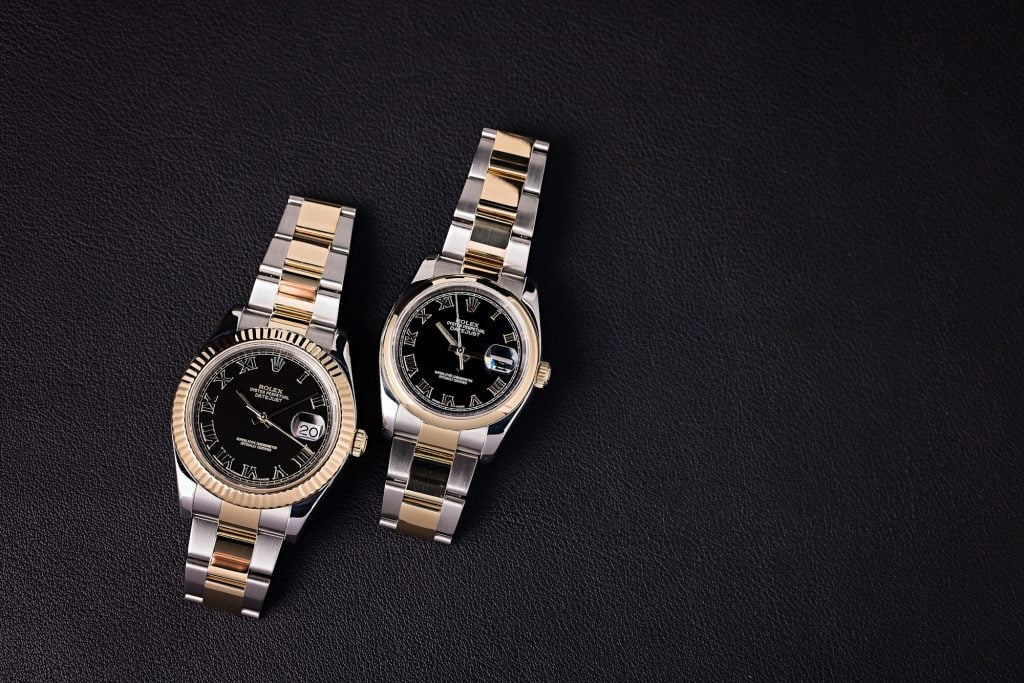
A mere 5mm difference may appear insignificant on paper but dramatically alters the watch’s visual impact on the wrist. As we discuss in our Rolex Datejust 36 buying guide, the Datejust 36 retains the traditional proportions that have characterized luxury watches for generations, so with its narrower lugs and smaller bezel, it has a more refined, almost “jewelry watch”-like feel. The Datejust 41 simply takes up more space on your wrist and therefore commands more attention with wider lugs that give it a more athletic look and a larger bezel that is more of a focal point.
One practical consideration worth noting: the Datejust 36’s lower profile and smaller footprint make it easier to wear under shirt cuffs and in formal situations where you want your watch present but not prominent. The Datejust 41, while still perfectly appropriate for business settings, has a bit more height and width that some wearers notice when dressing formally. You can read the full backstory on our Datejust 41 review. Both models are available with either the sporty Oyster bracelet or the more elegant Jubilee bracelet, and the sizing differences apply within each bracelet style.
| Feature | Rolex Datejust 36 | Rolex Datejust 41 |
| Case Diameter | 36mm | 41mm |
| Movement | Caliber 3235 | Caliber 3235 |
| Power Reserve | 70 hours | 70 hours |
| Lug-to-Lug | Approx. 43.1mm | Approx. 47.6mm |
| Lug Width | 20mm | 21mm |
| Bracelet Options | Jubilee or Oyster | Jubilee or Oyster |
| Bezel | Proportionally smaller and more understated | Wider and more prominent |
| Lugs | Slimmer and more tapered | Broader and more substantial |
| Best For | Wrists under 6.5″, Classic Style | Wrists over 7″, Modern Style |
| Aesthetic | Elegant, Understated, Proportional | Bold, Substantial, Sporty |
The On-the-Wrist Experience: How the Datejust 36 and 41 Really Wear
The Classic Charmer: The Datejust 36 on the Wrist
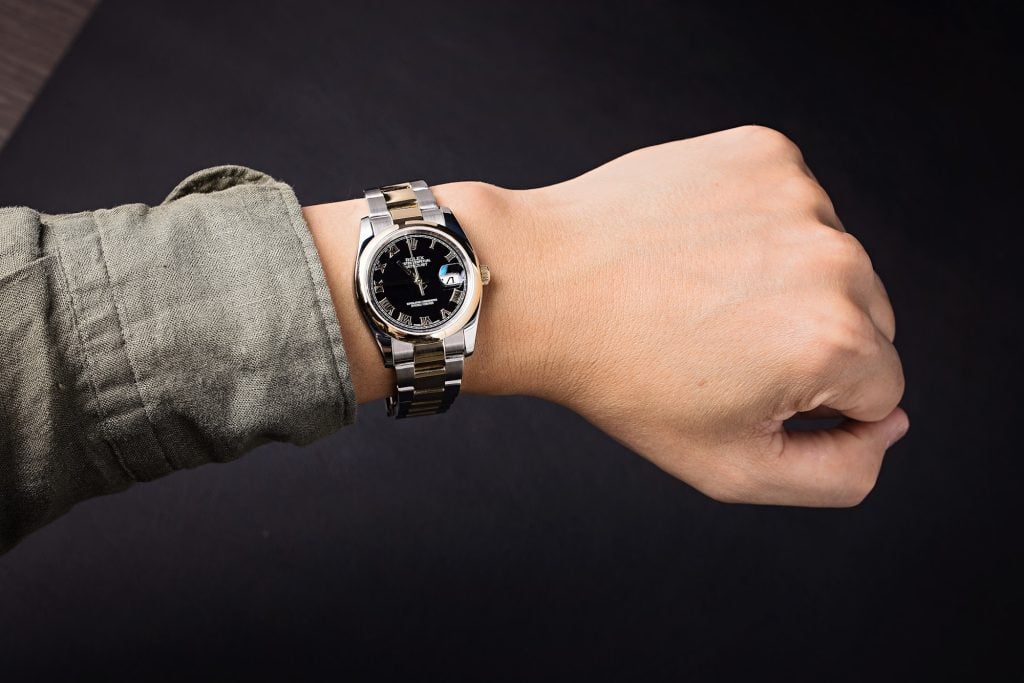
Datejust 36 vs 41 on a Man’s Wrist. It’s a question of class when you’re in the 36mm camp. A Datejust 36mm exudes a subtle and sophisticated elegance that is hard to beat. Its small lug-to-lug measurement means it never overhangs even on the slimmest of wrists. In fact, it centers itself beautifully, which is the iconic look that has characterized the Datejust for years. Its proportions look natural on most wrists and without being overly conspicuous or ostentatious. It is still a Rolex, though, and the materials and finishing are there for all to see. It carries itself well and is nicely centered making it feel at home pretty much anywhere from serious business to a casual weekend. It also will slide under a shirt cuff much easier without getting caught on fabric.
The Modern Powerhouse: The Datejust 41 on the Wrist
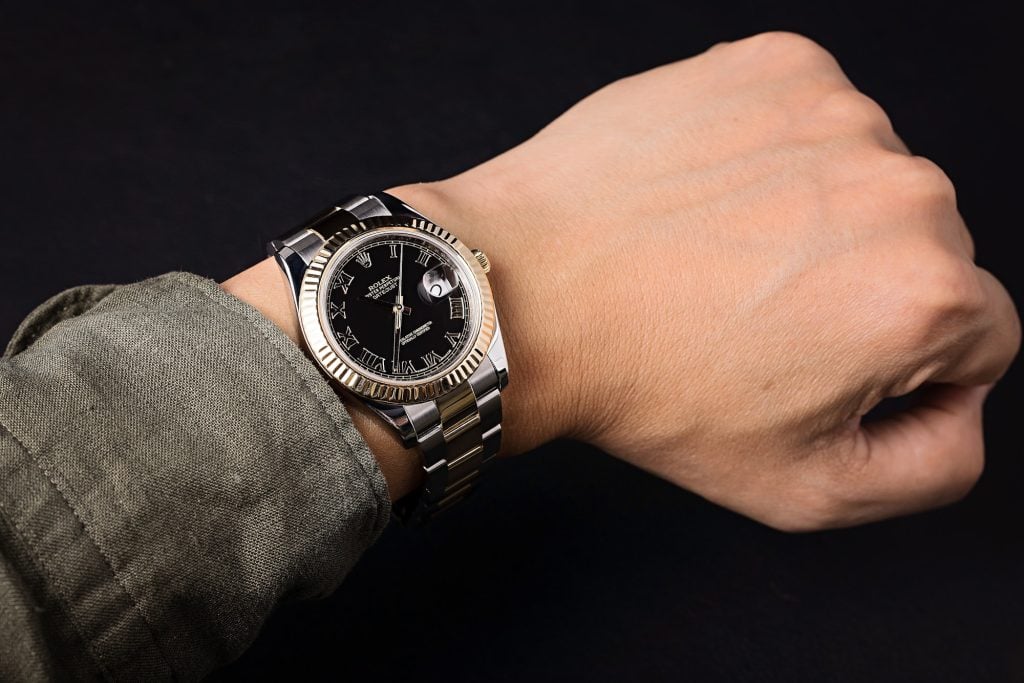
The Datejust 41 makes a confident statement the moment it’s on your wrist. It feels bolder and more substantial in a way that’s instantly reassuring. The larger case and broader lugs give it extra presence and a more modern aesthetic in line with today’s preference for bigger watches. Even the hands and hour markers have been scaled up slightly, making the dial easier to read at a glance.
Making Your Choice: How to Decide Between the Datejust 36 and 41
Selecting the right Rolex size means you have to balance practical considerations with personal preferences. Your wrist size provides a starting point, but your style and how you want the watch to feel ultimately determine the best choice.
Consider Your Wrist Size
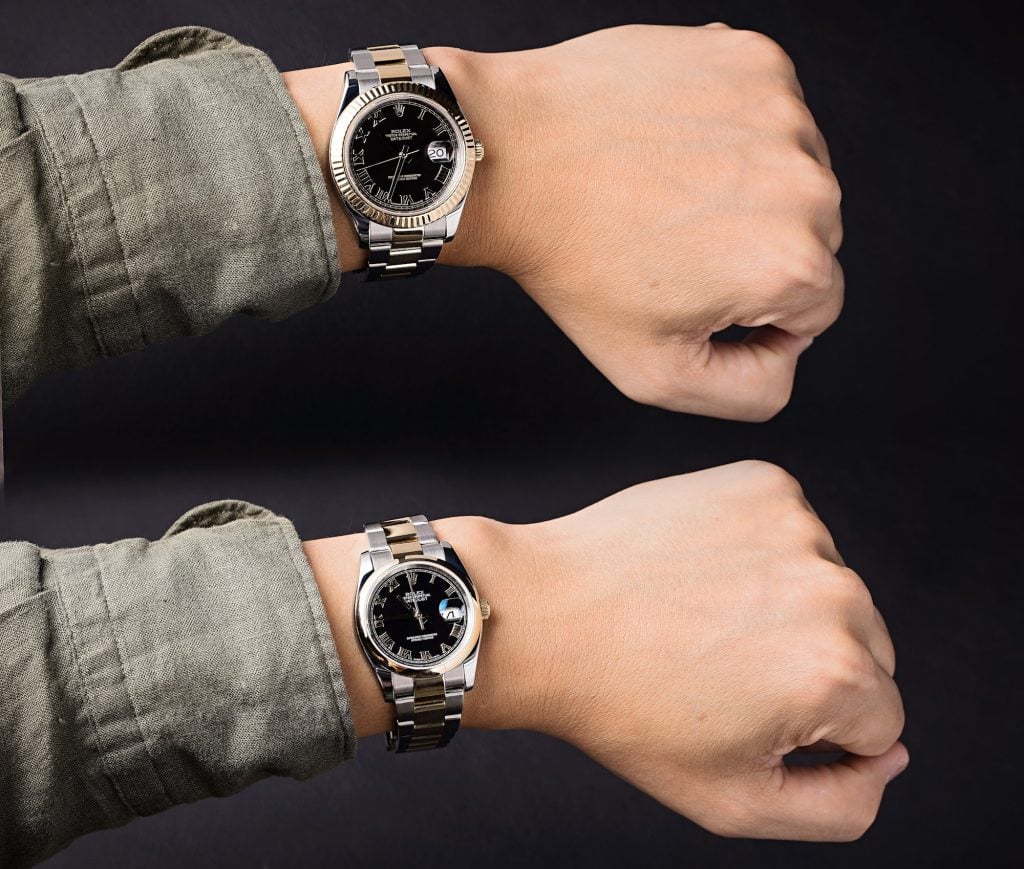
Your wrist circumference plays a significant role in how each model will look and feel:
- Under 6.5 inches: The Datejust 36 will likely provide better proportions and comfort. The 41mm may overpower smaller wrists, with the lugs potentially extending past the edges of your wrist.
- 6.5 to 7 inches: This range represents the sweet spot where either size can work beautifully. Your decision should focus more on style preferences than fit concerns, as both models will sit properly on your wrist.
- Over 7 inches: The Datejust 41 often looks more balanced on larger wrists, filling the space appropriately without appearing too small or delicate.
Define Your Personal Style
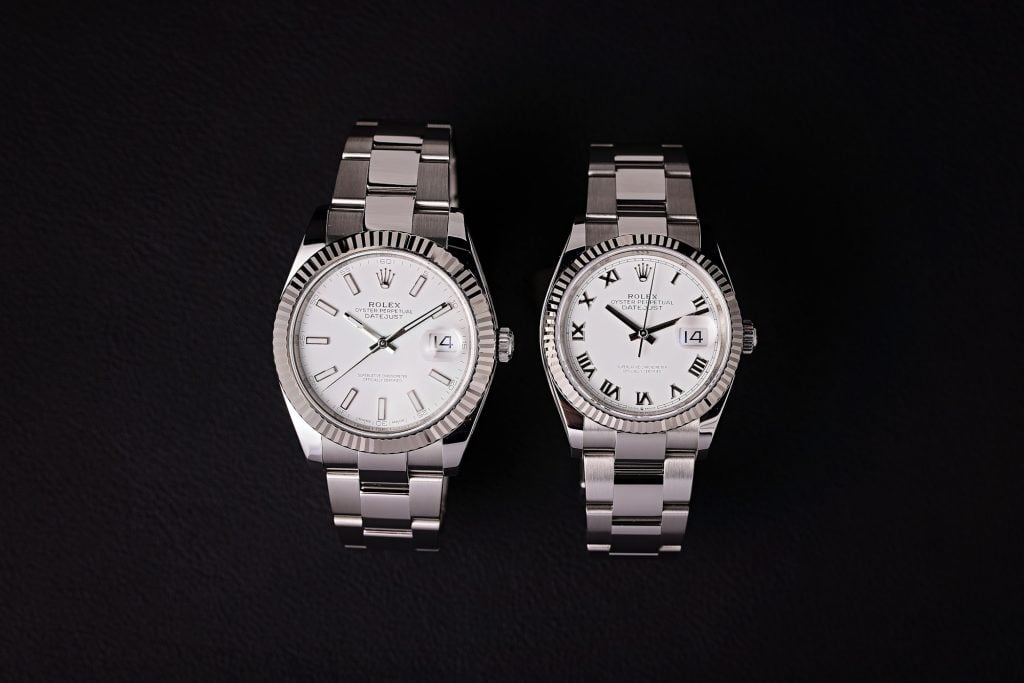
Think about how you want your watch to fit into your overall aesthetic:
- Classic and Traditional: If you’re drawn to vintage aesthetics, appreciate understated elegance, or want a watch that reflects traditional luxury watch proportions, the Datejust 36 is perfect.
- Modern and Bold: If you want your watch to make more of a statement, prefer contemporary styling, or gravitate toward the larger watch trend that’s dominated the past two decades, then the Datejust 41 delivers.
The In-Person Feel Factor
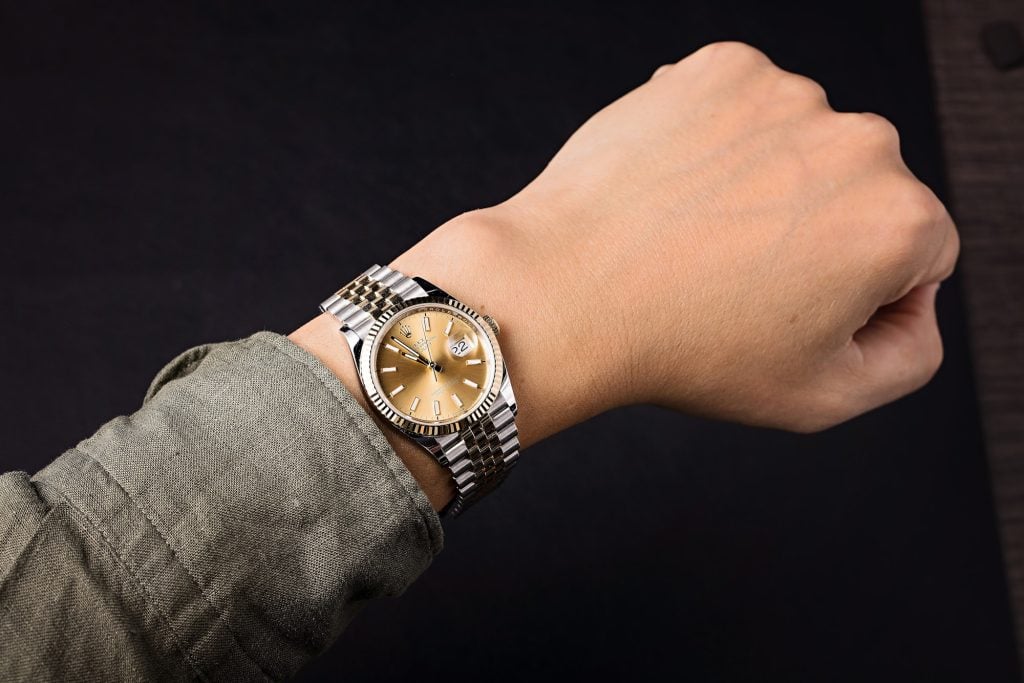
Specs and style notes only tell you so much. Whenever possible, put both watches on your wrist. Photos and words are not good at conveying how a watch feels when you are actually wearing it. Consider comfort, how visually balanced it looks, and what your gut instinct is when you see each watch on your wrist. Trust your instincts: you’re the one who will be wearing this watch for years to come.
The Enduring Appeal of the Rolex Datejust
Whether it’s the classic 36mm or the modern 41mm, when you own a Datejust you own a watch that is historically important and that time has proven won’t ever go out of style. The Datejust has stayed relevant for 80 years because Rolex knew something very important: good design and great construction will always trump fleeting fashion.
The choice between these two models isn’t about picking the “better” watch because both are exceptional in their own right. It’s about understanding which interpretation of the Datejust’s DNA speaks to you personally. At Bob’s Watches, we have a deep appreciation for the heritage and variety of the Rolex Datejust watches for sale. We invite you to browse through our inventory, whether your preference is for the traditional elegance of the 36 or the modern presence of the 41.
Frequently Asked Questions (FAQs)
No, the Datejust 36 is not too small for a man. The Datejust 36 has been the standard size of the Datejust for decades and is the original and classic size.
The Datejust 41 features more refined case proportions with slimmer lugs and an upgraded Caliber 3235 movement with 70-hour power reserve, compared to the Datejust II’s somewhat bulkier design and 48-hour power reserve.
Yes, the Rolex Datejust holds its value well compared to most luxury watches, though it typically doesn’t appreciate as dramatically as sports models like the Submariner or Daytona. Its enduring popularity and Rolex’s brand strength contribute to solid resale values.
Both sizes are extremely popular, with the 41mm appealing to buyers who want more wrist presence and the 36mm attracting those who appreciate classic proportions. Popularity shifts with broader trends, and both sizes sell consistently well in the pre-owned market.
The post Rolex Datejust 36 vs 41: Which One is Right for You? appeared first on Bob’s Watches.